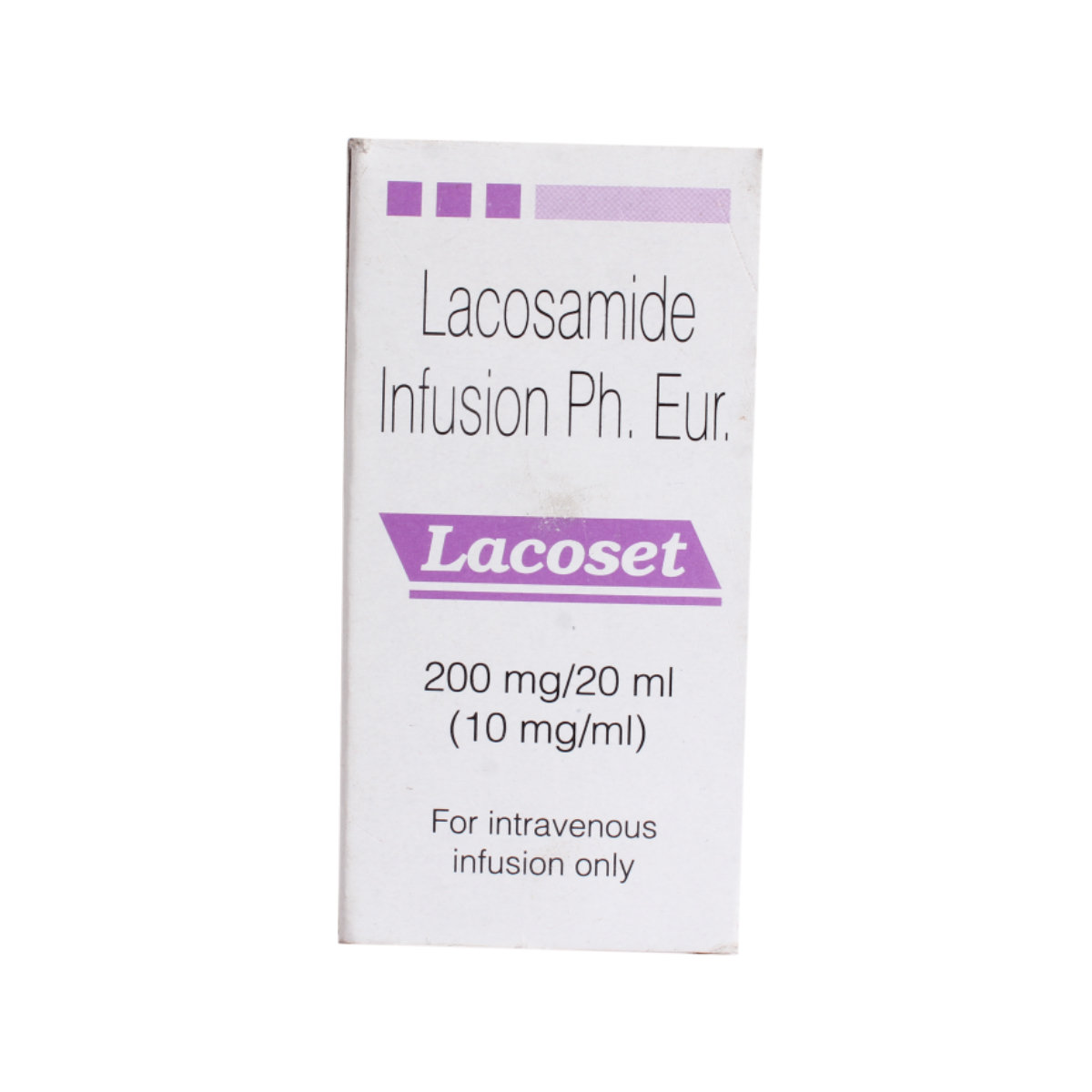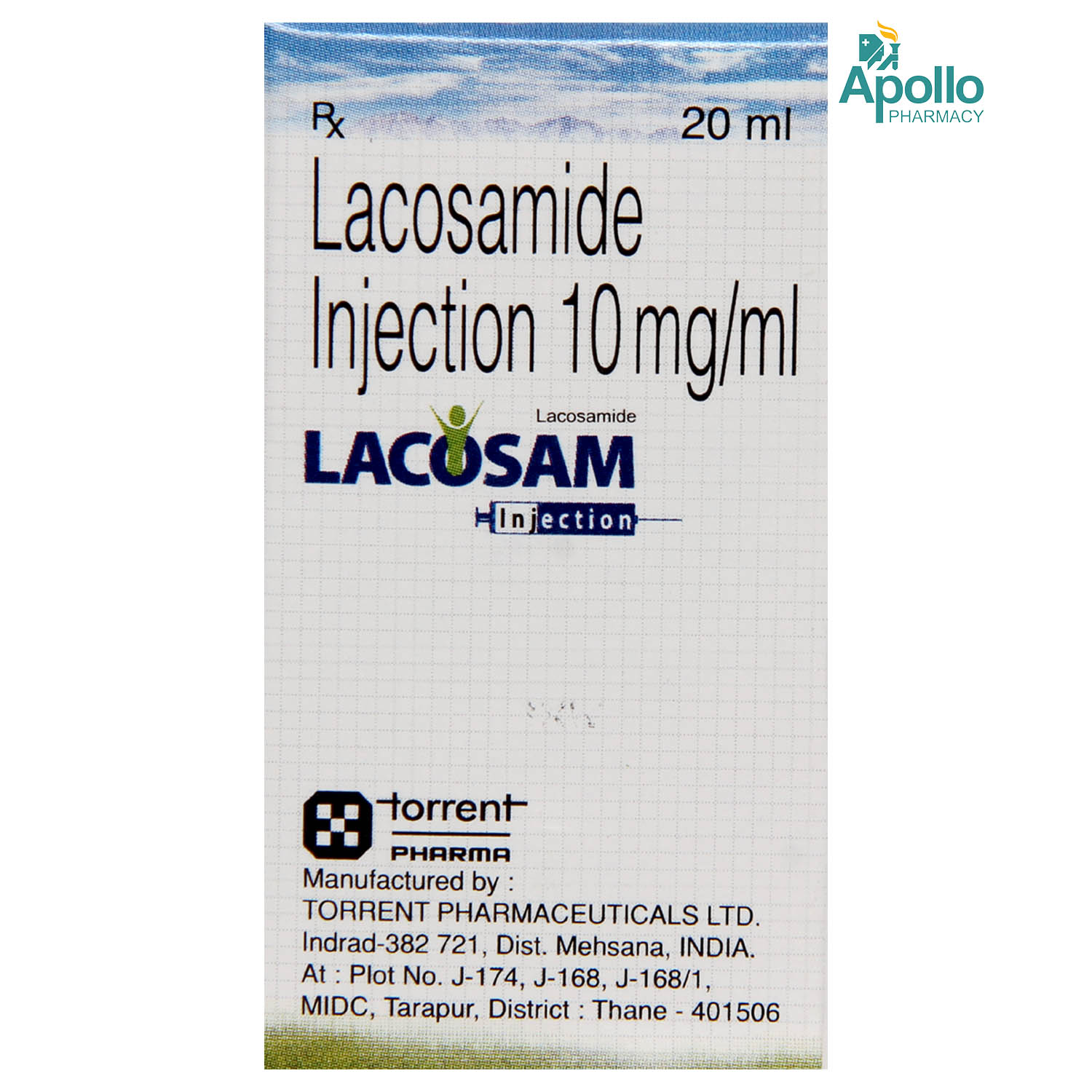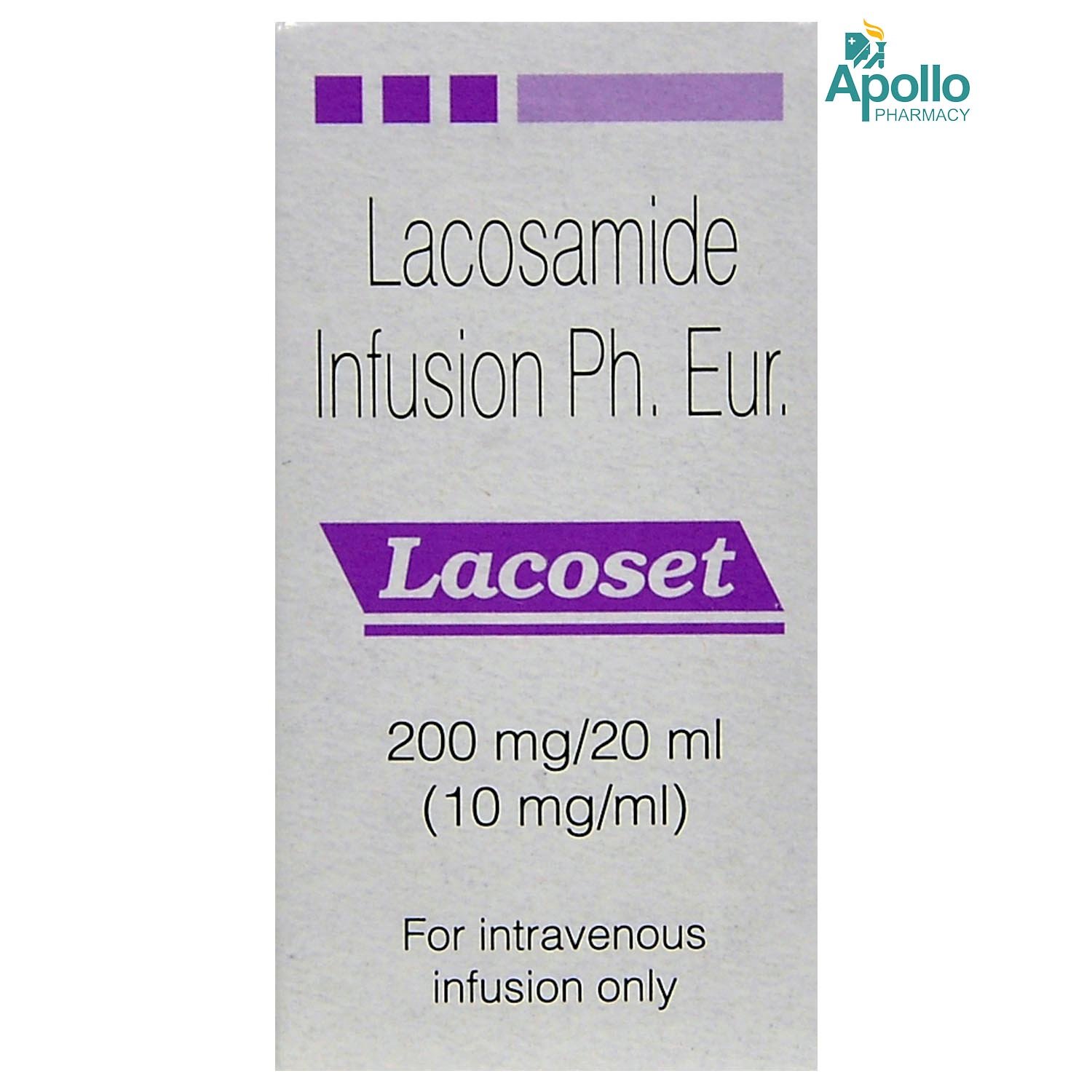- Home
- LACONEXT INJECTION
LACONEXT INJECTION Substitute
LACONEXT INJECTION Substitute
Medicine Composition:
LACOSAMIDE-10MGAll Substitutes & Brand Comparisons
RX
Lacoset 200 mg Injection 20 ml
Sun Pharmaceutical Industries Ltd
₹275.5
(₹1.24/ 1ml)
79% CHEAPERRX
Lacopsy 10mg/20ml Injection
Cipla Ltd
₹157
(₹7.07/ 1ml)
14% COSTLIERRX
Lacosam Injection 20 ml
Torrent Pharmaceuticals Ltd
₹171
(₹7.7/ 1ml)
24% COSTLIERRX
Lacove 10 mg Injection 20 ml
Linux Laboratories Pvt Ltd
₹196
(₹9.8/ 1ml)
58% COSTLIERRX
Out of StockSizlac10Mg/Ml Inj 20Ml
₹243
(₹10.94/ 1ml)
76% COSTLIERRX
Lacotide 10Mg Inj 20Ml
Intas Pharmaceuticals Ltd
₹261.5
(₹11.77/ 1ml)
90% COSTLIERRX
LACOSET 10MG/ML INJECTION
Sun Pharmaceutical Industries Ltd
₹275.5
(₹248.0 per unit)
3906% COSTLIER

When Should You Consider Switching from LACONEXT INJECTION?
Patients may explore substitutes in the following scenarios:
- High monthly cost of LACONEXT INJECTION
- Non-availability in local pharmacies
- Generic recommendation by a doctor
- Side effects or better tolerability with alternatives
What to Know Before Switching
Before you switch from LACONEXT INJECTION to another medicine, here are some important points to keep in mind:
Same salt, different brands:
Most substitutes contain the same active ingredient - LACOSAMIDE-10MG, but the fillers, coating, or manufacturing quality may vary slightly.
Consult your doctor first:
Even if the salt is the same, your doctor can confirm if the substitute is right for your condition, dosage, and health history.
Watch out for allergies or reactions:
Some people may react differently to certain brands due to inactive ingredients. If you notice any side effects, inform your doctor immediately.
Price ≠ effectiveness:
A lower-priced substitute doesn't mean it's less effective. Many generic medicines work just as well as branded ones.
Check the dosage form and strength:
Always match the substitute’s strength (e.g., 5mg, 10mg) and form (tablet, capsule, syrup) with what your doctor prescribed.
Uses
LACONEXT INJECTION is used in the treatment of focal (partial) seizures. The detailed uses of LACONEXT INJECTION are as follows:
- Partial-onset (focal) seizures: Treats partial-onset (focal) seizures in both adults and children, helping to reduce abnormal brain activity.
- Generalised tonic-clonic seizures: Controls generalised tonic-clonic seizures, which cause loss of consciousness along with muscle stiffness and jerking movements.
Medicinal Benefits
- LACONEXT INJECTION effectively manages seizures affecting only one part of the brain in adults and children (1 month and older) who cannot take oral medicines.
- It is used along with other medicines to control full-body seizures (grand mal seizures) in adults and children (4 years and older) who are unable to take oral treatment.
- LACONEXT INJECTION provides an alternative for patients who need seizure control but cannot swallow or tolerate oral medications.
- It decreases abnormal electrical signals in the brain, reducing seizure frequency and severity.
- LACONEXT INJECTION helps prevent seizure-related complications, injuries, and interruptions to daily living.
FAQs
The substitutes of LACONEXT INJECTION contain the same active salt(s) - LACOSAMIDE-10MG. However, they may differ in price, manufacturing quality, and inactive ingredients. Speak to your doctor to find a suitable option.
Switching to a generic substitute medicine in the place of LACONEXT INJECTION is often possible if it has the same salt, strength, and dosage form. But always check with your doctor before making any changes to your medication.
Generics versions of LACONEXT INJECTION are typically more affordable because they don’t include the original brand's research, development, and marketing costs. They contain the same active ingredient and are approved for safety and effectiveness.
Most people don’t notice any difference. However, some may react to different fillers or coatings. If you notice any unusual symptoms after switching, consult your doctor.
Make sure the new medicine has the same active salt, strength, dosage form. Always confirm the change with your doctor or pharmacist.
Substitutes of LACONEXT INJECTION meet the same safety and efficacy standards as LACONEXT INJECTION, but small differences in absorption or formulation can exist. A doctor can help you choose the right one for your needs.
Yes. Substitutes of LACONEXT INJECTION may vary in color, size, or shape due to differences in manufacturing and branding, but this does not affect how they work.
Yes, it’s generally safe to switch between multiple substitutes of LACONEXT INJECTION if they have the same salt and strength. However, always inform your doctor so they can monitor how your body responds.
Yes, many people safely use substitutes of LACONEXT INJECTION for long-term treatment. Just ensure it’s done under medical supervision.
If your symptoms stay under control or lab results remain stable, the substitute for LACONEXT INJECTION is likely working well. Regular follow-ups with your doctor are important.
Absolutely. Even with the same salt, small differences can affect how your body responds when switching from LACONEXT INJECTION to its substitute. Always consult your doctor before switching.
LACONEXT INJECTION belongs to the class of anticonvulsants used to treat partial onset seizures (seizures that affect only one portion of the brain) in adults and children one month or older who cannot take oral treatments. LACONEXT INJECTION is also used in conjunction with other medications to manage primary generalised tonic-clonic seizures.
LACONEXT INJECTION contains lacosamide, which treats seizures by decreasing disorganised electrical activity in the brain.
Coordination and walking issues normally improve within a few weeks. Inform your service provider if the problems persist.
LACONEXT INJECTION should be used with caution in patients who are taking drugs that influence cardiac conduction, such as sodium channel blockers, beta-blockers, calcium channel blockers, potassium channel blockers, and medications that lengthen the PR interval.
Your doctor can identify a seizure after hearing about your experience or the signs noted by others. Your doctor may recommend testing based on your symptoms and medical history. Brain imaging scans, blood tests, or a spinal tap may be used to determine the cause of your seizures.
In people with cardiac rhythm and conduction abnormalities, use LACONEXT INJECTION with caution. In patients with underlying proarrhythmic disorders or who are taking concomitant drugs that influence cardiac conduction, an ECG should be obtained before and after titration for steady-state maintenance; these patients should be regularly monitored.
Buy best C.n.s Drugs products by
Intas Pharmaceuticals Ltd
Sun Pharmaceutical Industries Ltd
Torrent Pharmaceuticals Ltd
Alkem Laboratories Ltd
Alteus Biogenics Pvt Ltd
Abbott India Ltd
Cipla Ltd
Micro Labs Ltd
Lupin Ltd
Tripada Healthcare Pvt Ltd
D D Pharmaceuticals Pvt Ltd
Ipca Laboratories Ltd
Arinna Lifesciences Ltd
Icon Life Sciences
Linux Laboratories Pvt Ltd
Mankind Pharma Pvt Ltd
Cnx Health Care Pvt Ltd
East West Pharma India Pvt Ltd
La Renon Healthcare Pvt Ltd
Emcure Pharmaceuticals Ltd
Eris Life Sciences Ltd
Talent India Pvt Ltd
Leeford Healthcare Ltd
Consern Pharma Ltd
Tas Med India Pvt Ltd
Macleods Pharmaceuticals Ltd
Zydus Healthcare Ltd
Jagsam Pharma
Troikaa Pharmaceuticals Ltd
Dr Reddy's Laboratories Ltd
Ikon Pharmaceuticals Pvt Ltd
Matias Healthcare Pvt Ltd
Sigmund Promedica
Aristo Pharmaceuticals Pvt Ltd
Ardent Life Sciences Pvt Ltd
Shine Pharmaceuticals Ltd
Zydus Cadila
Theo Pharma Pvt Ltd
Wockhardt Ltd
Propel Healthcare
Lifecare Neuro Products Ltd
Crescent Formulations Pvt Ltd
Mesmer Pharmaceuticals
Matteo Health Care Pvt Ltd
Reliance Formulation Pvt Ltd
Morepen Laboratories Ltd
Neon Laboratories Ltd
Ajanta Pharma Ltd
Capital Pharma
Med Manor Organics Pvt Ltd
Akumentis Healthcare Ltd
Lyf Healthcare
Msn Laboratories Pvt Ltd
Sanix Formulation Pvt Ltd
Pulse Pharmaceuticals
Brainwave Healthcare Pvt Ltd
Hetero Healthcare Pvt Ltd
Cyrus Remedies Pvt Ltd
Sanofi India Ltd
Solvate Laboratories Pvt Ltd
Elder Pharmaceuticals Ltd
Novartis India Ltd
Psyco Remedies Ltd
Medishri Healthcare Pvt Ltd
Quince Lifesciences Pvt Ltd
Alniche Life Sciences Pvt Ltd
Crescent Therapeutics Ltd
Hbc Life Sciences Pvt Ltd
Mova Pharmaceutical Pvt Ltd
Prevego Healthcare & Research Pvt Ltd
Cadila Healthcare Ltd
Tripada Lifecare Pvt Ltd
Alembic Pharmaceuticals Ltd
Kivi Labs Ltd
Solis Pharmaceuticals
Talin Remedies Pvt Ltd
Serotonin Pharmaceuticals Llp
Glenmark Pharmaceuticals Ltd
Infivis Life Care
Aareen Healthcare Pvt Ltd
Trion Pharma India Llp
A N Pharmacia Laboratories Pvt Ltd
Gagnant Healthcare Pvt Ltd
Primus Remedies Pvt Ltd
Cadila Pharmaceuticals Ltd
Crescent Pharmaceuticals
Glarizonto Pharma Pvt Ltd
Knoll Healthcare Pvt Ltd
Lyceum Life Sciences Pvt Ltd
Wallace Pharmaceuticals Pvt Ltd
Zuventus Healthcare Ltd
Arches Pharmaceuticals
Divine Savior Pvt Ltd
Lia Life Sciences Pvt Ltd
Lincoln Pharmaceuticals Ltd
USV Pvt Ltd
Vasu Organics Pvt Ltd
Corona Remedies Pvt Ltd
Glial Life Science Llp
Maneesh Pharmaceuticals Ltd







